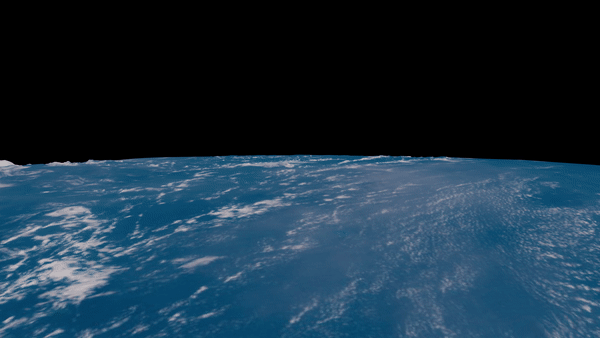Record-breaking Tonga undersea volcano disrupted satellite signals in space
The January 2022 Hunga Tonga-Hunga Ha'apai eruption continues to astound.

An underwater volcanic eruption last year was powerful enough to generate plasma bubbles that disrupted radio communications in outer space, a new study finds.
The new results could lead to ways to avoid satellite and GPS disruptions on Earth, and to learn more about volcanoes on alien worlds, scientists added.
In January 2022, the Hunga Tonga-Hunga Ha'apai submarine volcano — a large, cone-shaped mountain located near the 169 islands of the Kingdom of Tonga in the South Pacific — erupted with a violent explosion. The outburst generated the highest-ever recorded volcanic plume, one reaching 35 miles (57 kilometers) tall, and triggered tsunamis as far away as the Caribbean. All in all, the eruption was the most powerful natural explosion in more than a century, rivaling the strength of the largest U.S. nuclear bomb.
Related: Huge Tonga volcanic eruption spawned record-breaking winds at the edge of space
Previous research found the atmospheric waves — fluctuations in air pressure — from the eruption were powerful enough to disturb the ionosphere, one of the highest layers of Earth's atmosphere, stretching from an altitude of about 50 miles to 620 miles (80 to 1,000 km). Solar radiation energizes the molecules and atoms there to generate the electrically charged ions that give this layer its name.
Scientists had long speculated that volcanic activity could disrupt the ionosphere's F-region, which stretches about 90 to 500 miles (150 to 800 km) from Earth's surface. The F-region possesses the highest concentration of ions anywhere in the atmosphere.
In the equatorial areas of the ionosphere, holes can form that can disrupt satellite communications and GPS signals. Researchers had long wondered if volcanic eruptions and other events on land could generate these so-called "equatorial plasma bubbles."
Get the Space.com Newsletter
Breaking space news, the latest updates on rocket launches, skywatching events and more!
"Such plasma bubbles are rarely observed in the ionosphere," study lead author Atsuki Shinbori, an atmospheric scientist at Nagoya University in Japan, told Space.com.
In the new study, researchers used Japan's Arase satellite to detect equatorial plasma bubbles, the nation's Himawari-8 satellite to monitor atmospheric waves and ground-based stations to track motions in the ionosphere.
The scientists found that after a shockwave from the Tonga eruption hit the ionosphere, they detected equatorial plasma bubbles "extending to space at an altitude of at least 2,000 kilometers [1,240 miles]," Shinbori said. This is much farther than predicted by standard models of the bubbles.
Surprisingly, the scientists also discovered a sudden rise in electron density and an increase in the height of the ionosphere up to hours before the initial arrival of this shockwave. The researchers suggested this fast response may have occurred due to atmospheric waves from the eruption interacting with the electrically charged ions in the ionosphere, causing energy to travel quickly along Earth's magnetic field lines.
The new findings may help scientists forecast plasma bubbles associated with volcanic eruptions and other events on Earth's surface. Although researchers cannot prevent the severe effects on satellite communications and GPS signals these bubbles may cause, "we will be able to alert operators of airplanes and ships that are expected to pass through the occurrence region of the plasma bubbles in the future," Shinbori said.
Future research can also not only investigate the atmospheric effects of volcanoes on Earth, but also those of volcanoes on distant worlds.
"For example, Venus is covered by thick clouds, and it is difficult to directly determine the presence or absence of active volcanoes there only by optical observations by satellites," Shinbori said. "The presence of active volcanoes there may be confirmed by plasma measurements like those made by the Arase satellite."
The scientists detailed their findings online today (May 22) in the journal Scientific Reports.
Join our Space Forums to keep talking space on the latest missions, night sky and more! And if you have a news tip, correction or comment, let us know at: community@space.com.

Charles Q. Choi is a contributing writer for Space.com and Live Science. He covers all things human origins and astronomy as well as physics, animals and general science topics. Charles has a Master of Arts degree from the University of Missouri-Columbia, School of Journalism and a Bachelor of Arts degree from the University of South Florida. Charles has visited every continent on Earth, drinking rancid yak butter tea in Lhasa, snorkeling with sea lions in the Galapagos and even climbing an iceberg in Antarctica. Visit him at http://www.sciwriter.us









